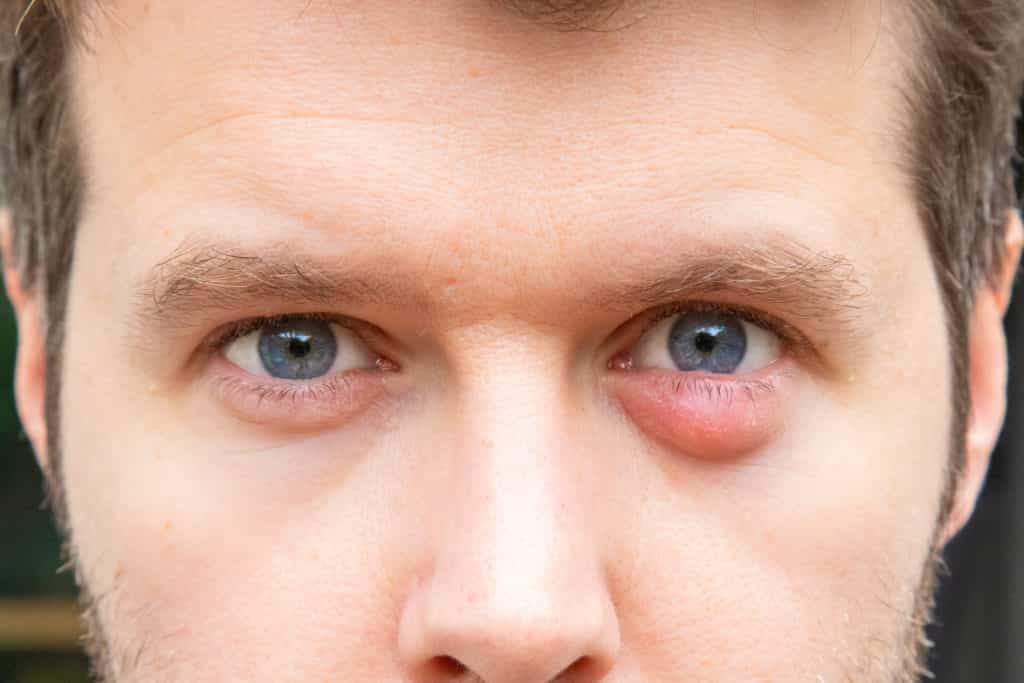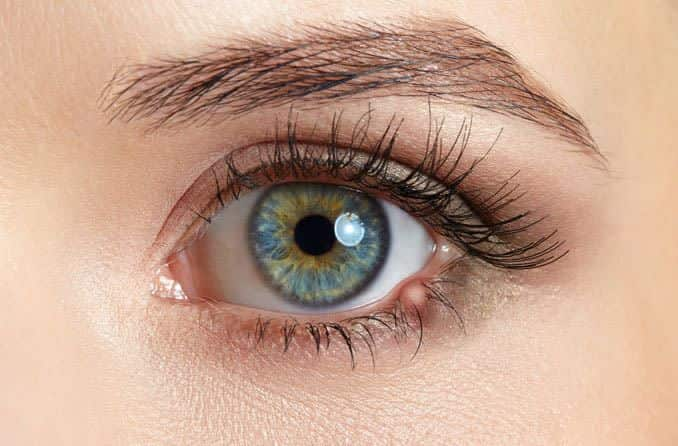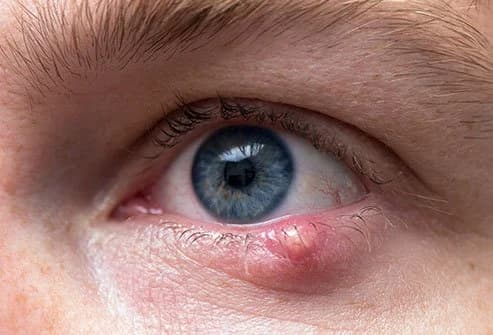Can A Stye Cause A Headache?
A stye is an infection of the tear sebaceous glands (meibomian glands) located inside the eyelids.
Stye in the eye is a common and often disturbing condition.
When a stye occurs, a pimple-like redness and swelling occur on the eyelid, which may be accompanied by a feeling of pain and discomfort in the eyelid.
A stye on the eye usually goes away within a few days or a week, sometimes it may take longer to heal.
During this period, it is important to pay attention to eyelid cleaning and hygiene, to apply warm compresses and to use antibiotic drops and pomades recommended by your eye doctor.
What Will We Learn?
Can A Stye Cause A Headache?
Headache is not among the direct symptoms of a stye.
However, especially since the nerves in the head part of our body are closer to the brain, we may feel a headache when pain occurs in our face, neck, ear, throat, teeth and other organs.
When your toothaches, this pain can spread to the ear and head.
Since toothache is directly related to the nerve, ear, and headache are severe, but this is not the case for a stye.
A sty can cause a headache, but this pain is usually not severe.
Because there is no hypersensitive nerve that goes from the eye to the brain during a stye and can cause a headache.
However, the entire nervous system of our body is interrelated.
For this reason, when any part of our body hurts, pain may occur in a place close to the aching area.
If, despite all this, the headache is severe and does not go away, you should see a doctor.
Your doctor will answer the most accurate treatment method and any questions you may have.

What Is Good For A Sty In The Eye?
It is very good to apply a warm dressing to the lid area for 5-10 minutes and then massage the sty in the eye.
The warm dressing helps to soften and unclog the sebaceous structure inside the tear sebaceous glands and prevents cysts from becoming a chalazion.
If a sty is not treated on time, it hardens and chalazion occurs.
The treatment of chalazion is surgical, it is taken together with the cyst capsule.
How To Make A Warm Dressing For The Eye?
A clean gauze or make-up cotton is dipped in hot water or brewed tea.
The water is well squeezed and excess water is removed.
This warm cloth is left on the eyelids for at least 5 minutes.
If it cools down quickly, it can be soaked in water again.
The eyelid skin is one of the thinnest skin parts in the body.
Therefore, it is extremely sensitive.
For this reason, care should be taken to insure that it is at a temperature that will not damage the eyelid skin while hot dressing is applied to the eyelid.
Otherwise, the lid skin, and eyes may be damaged.
In order to determine the appropriate temperature, care should be taken that the water to be used is at a temperature that will not burn when a finger is dipped into it.
Teabags can also be used to make dressings.
The warm dressing should be done 1-2 times a day.
Will The Stye Go Away On Its Own?
A stye can go away on its own if the warm dressing is applied.
In about half of the patients with stye, this discomfort goes away on its own.
In the other half, if left untreated, it turns into a chalazion.
If it does not improve within a few days, an ophthalmologist should be consulted.
How Long Does A Stye Take?
Stye resolves with treatment in an average of one week to 10 days.
When Should You Go to the Doctor?
The earlier the stye treatment is started, the faster the recovery and the lower the risk of it turning into a chalazion.
First of all, it is recommended to clean the base of the eyelashes, apply a warm dressing on the lid to the area with the sty, and then massage.
If the stye does not heal within a few days, if the pain increases or spreads to the lid, it is necessary to consult an ophthalmologist immediately.

Is A Stye Contagious?
A sty cannot be transmitted to another person.
However, if a person has a stye in one eye, the sty in the same eye or the other eye will recur much more frequently.
Is There A Treatment For Stye With Herbal Methods?
Dressing with hot water or hot tea is very useful in the treatment.
The use of gel, shampoo and eye wipes specially produced for the eye to clean the eyelash edges may also benefit the patient.
Apart from this, alternative herbal solutions such as garlic used in public should be avoided.
Are IPL Light And Mask Effective In Stye Treatment?
In the treatment of stye, IPL light and mask therapy is a new and effective treatment method.
It shows its effect in a very short time after application.
Approximately 2 days after the treatment, swelling, redness, and pain are reduced.
At the same time, the frequency of recurrence of the stye is reduced in these patients.
In more chronic patients, several sessions of IPL light therapy and mask application may be required.
What Are The Types Of Stye?
The shallot is divided into two as internal and external.
- External sty: It is more common. It is usually an inflammation of the eyelash follicles or sebaceous glands.
- Internal sty: It is an acute infection of the tear sebaceous (meibomian) glands in the eyelid. Widespread redness, edema, tenderness, and pain occur on the upper part of the lid.
What Happens If A Stye Is Not Treated?
If a stye is not treated, it is more likely to turn into a chalazion.
Rarely, the infection may spread and involve the entire eyelid.
If this is the case, it is important to consult an ophthalmologist without delay.
Your ophthalmologist may recommend systemic treatment as well as antibiotics in the form of drops and ointments.
Is A Stye Seen In One Eye?
A stye usually affects one eye at first, but can occur in both eyes at the same time, or even on the upper and lower lids.
What Are The New Methods Apart From Surgical Treatment?
IPL light therapy is an effective treatment method applied before deciding on surgical treatment.
In approximately 80-90% of patients, this treatment method is as effective as surgical treatment.
These methods are preferred by patients because they are easier and painless.
What Is A Chalazion?
They are cysts that form on the lower and/or upper eyelids as a result of the obstruction of the meibomian sebaceous glands on the edges of the eyelids. It may start as an internal sty.
It may not be noticed at first because it is small and painless.
As the chalazion grows, pain, redness and tenderness may occur in the eyelid.
If the chalazion enlarges and presses on the eyelid, it can cause blurred vision.
If left untreated, it can rarely involve the entire lid.
What Are The Symptoms Of A Stye?
- The small yellow focus of inflammation in the middle of the swelling
- Pain in the eyelid
- Redness, swelling, and warmth around the swollen area on the eyelid
- Crusting on the eyelid
- Stinging, watering, light sensitivity
- Pimple-like red swelling and swelling on the eyelid

Why Does A Sty Occur?
A stye is an inflammation of the sebaceous glands in the eyelids.
The most common cause is bacterial infections (microorganisms called staphylococci) caused by blockage of the sebaceous glands.
Inflammation of the eyelid sebaceous glands has several causes.
The most common causes:
- People who have had styes or chalazion before,
- Touching the eyes without washing the hands and thus infecting the eye with the infectious agent (especially in children),
- Spread of the infection in the eye to other foci in the same or other eye by touching the eyes with the hands,
- Sleeping at night without removing eye makeup,
- Non-compliance with hygiene rules in the use of make-up and/or sharing of make-up material,
- Contact lenses are not used cleanly, not to be taken out of the eye at night,
- Non-compliance with hygiene rules in silk eyelashes and false eyelashes applications,
- Eyelash root inflammation called blepharitis and meibomite,
- A rosacea skin disease that occurs with redness on the skin,
- Situations where body resistance decreases, such as fatigue, insomnia, and stress.
How Is A Stye Diagnosed?
The diagnosis of a stye is made by an ophthalmologist’s examination with a slit lamp.
In this examination, the sty, its inflammation, and if any, cysts and obstruction in the meibomian glands are seen.
Sometimes, more than one sty focus is detected on examination.
By performing a special examination method called meibography, the ophthalmologist can detect congestion, structural disorders and loss of the sebaceous glands in the eyelid and determine the exact source of the problem.
How Is Stye Treatment Applied?
The first stage of sty treatment is eyelash cleaning and warm dressing applied to the eyelid.
First of all, eyelash bases are cleaned with eye-specific cleaning solutions or special wipes.
It is very important to apply a warm dressing to the eyelid 2-3 times a day for 5-10 minutes in the treatment of styes.
The application of hot dressing is aimed to open the blockages in the sebaceous glands and increasing the effect of the treatment.
After the warm dressing, it is recommended to massage the eyelids, especially the area of the sty.
Afterward, antibiotic drops and ointments are applied to the eye.
Contact lenses should not be used until the stye heals, and eye make-up should not be done.
How To Heal A Sty?
If you have styes in your eye and the above-mentioned complaints and your eye does not improve within a few days, it would be appropriate to consult an ophthalmologist.
As a result of the examination, your eye doctor will plan the necessary treatment for the discomfort in your eye.
Depending on the condition of your eye, he or she may recommend antibiotic-containing eye drops and ointment treatments or, if there is a more common infection, oral antibiotic treatment.
In the treatment of styes, eyelash cleaning, warm dressing and massaging the lids are at least as useful and important as drug treatment.
The application of these methods ensures that the tear sebaceous glands are blocked, the infection is limited, and the cyst formation is prevented.
For this reason, it is very important for the success of the treatment to pay attention to warm dressing and eyelash cleaning in addition to drug treatment.
New Technological Treatments For Stye Treatment
In the treatment of stye and chalazion, IPL light laser and infrared mask therapy is an effective treatment method that has been used recently.
If a sty is treated with IPL laser and mask treatment in the early period, it reduces the rate of transformation into chalazion and the need for surgical treatment.
Recurrence of the sty is prevented.
IPL light therapy is also a very effective method in the treatment of blepharitis and parasites called Demodex.
It is effective in the treatment of both blepharitis and dry eye disease that can be seen together.
Treating blepharitis reduces a person’s risk of developing styes and chalazion.
IPL light and mask treatment are applied to the stye every 48 hours, and it shows its effect in a very short time after the application.
After the treatment, swelling, redness, and pain are reduced.
In most patients, significant relief is observed after 48 hours.
In these patients, the frequency of recurrence of the sty after treatment is also reduced.
In more chronic patients, several sessions of IPL light and infrared mask treatment may be required.
When Is Stye Surgery Performed?
If the sty has been present for at least three to four weeks or if it does not shrink despite the treatment, if it has become cystic and has a hard structure, surgical treatment is required.
How Is Stye Surgery Performed?
The lid area where the stye is located is anesthetized with local anesthesia.
A small incision is made inside the eyelid and the inflammation is completely drained, and the cyst is cleaned together with the wall around it.
Clogged sebaceous glands open.
It is an operation that takes about 5-10 minutes.
After the surgery, the eye is covered with a bandage for a few hours.
Controls are made on the day after the surgery, 1 week and 1 month later, or on dates that your doctor deems appropriate.
You can return to work 1-2 days after the operation.
What Should I Do If I Have A Condition Such As A Stye?
- Always wash your hands before and after touching your eyes. Do not share your towel with anyone.
- Do not put on eye makeup until the stye is gone.
- Do not try to squeeze or pop the stye as it spreads the infection.
- The warm dressing should be done.
- Pay close attention to your eye hygiene.
- If you have blepharitis, pay attention to regular eyelash cleaning.
Our article on ovarian cyst may also attract your attention.
